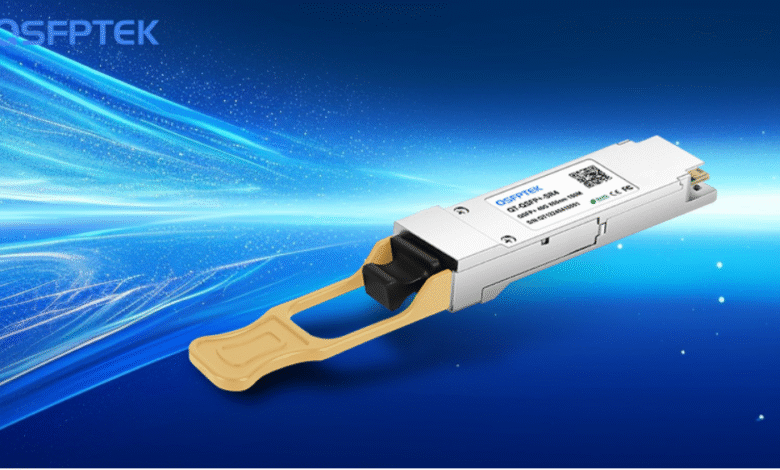10GBASE-SR SFP+ Optical Module FAQs

A cost-effective choice for short-distance 10G network connections.
For short-distance 10G transmission in data centers and enterprise networks, the 10GBASE-SR SFP+ optical module is a popular choice due to its low cost and low power consumption. Whether building a new network or upgrading an existing one, understanding the technical features and key usage considerations of this optical module is crucial. This article summarizes the most frequently asked questions and practical answers about the 10GBASE-SR SFP+.
10GBASE-SR SFP+ Basic Features
The “SR” in the 10GBASE-SR SFP+ optical module stands for “Short Range” and is designed for short-distance data transmission. It utilizes an 850nm wavelength to transmit data over multimode fiber.
The transmission distance depends on the fiber type used: up to 26 meters on standard multimode fiber, up to 300 meters on optimized OM3 multimode fiber, and up to 400 meters on OM4 multimode fiber. This makes it ideal for short-distance connections within data centers or between buildings.
Technical Details and Compatibility
Compatibility and Coding Issues
Compatibility of 10GBASE-SR optical modules is one of the most pressing concerns for users. Most modules that comply with the MSA (Multi-Source Agreement) standard will work with equipment from different brands.
However, please note that some manufacturers have specific coding. For example, Cisco’s SFP-10G-SR-S belongs to the “S-Class” series, suitable for standard enterprise applications, while the SFP-10G-SR-X supports a wider temperature range (-40°C to 85°C). Modules with special coding (such as the FET-10G for Nexus switches) may be limited to specific equipment.
Level Compatibility
At the hardware level, when connecting chipsets such as the TLK2711 with 10G SFP+ optical modules, pay attention to level compatibility. If the optical module is not compatible with VML levels, AC coupling or other methods may be required. This is particularly important when designing your own hardware.
Common Problems and Solutions
Link Establishment Issues
In actual deployments, you may encounter situations where link establishment fails. If the message “can’t derive routing for PCI INT A” or “PCI INT A: not connected” appears in the system log, it’s often related to the PCIe interrupt routing configuration.
Solutions include upgrading the kernel, checking BIOS settings, or manually adjusting interrupt assignments. When using chips such as the TLK10031, ensuring correct register configuration is also crucial for establishing a 10GBASE-SR link.
Packet Loss and Performance Issues
If network monitoring software reports packet loss, but the switch interface counters show no errors, this could be a software false alarm or a specific configuration issue. It is recommended to check flow control settings, VLAN configuration, and port statistics, and continuously monitor them.
Purchasing Recommendations
Comparison of Alternative Solutions
When choosing a 10G short-distance connection solution, in addition to 10GBASE-SR optical modules, the following options are available:
10GBASE-T: Suitable for environments with existing copper cabling, but with shorter transmission distances (typically ≤50 meters).
DAC (Direct Attach Copper Cable): For extremely short-distance connections within a rack (typically ≤0-50 meters), offering low cost.
AOC (Active Optical Cable): A fiber optic cable with integrated optical modules, simplifying installation.
For links exceeding 50 meters, SFP-10G-SR with fiber optic patch cables is generally a more suitable option.
Cost Considerations
There is a significant price difference between genuine brand modules and third-party compatible modules. Most third-party compatible modules adhere to MSA standards, offer comparable performance, and offer lower cost, making them a cost-effective option. When purchasing, ensure module compatibility with your equipment and choose a reputable supplier.
Fiber Selection
10GBASE-SR modules use LC-LC multimode fiber patch cables. For optimal transmission, OM3 or OM4 laser-optimized multimode fiber is recommended.
Summary
10GBASE-SR SFP+ optical modules are a cost-effective option for short-distance 10G network connections. In practical applications, ensuring compatibility, selecting the appropriate fiber type, and correctly configuring the hardware are key to ensuring stable operation. With technological advancements, third-party compatible modules have significantly reduced costs while maintaining quality, making this solution even more attractive.
For most data center and enterprise network environments, 10GBASE-SR SFP+ offers a balance of performance, cost, and reliability for transmission requirements within 300 meters, making it an ideal choice for short-distance 10G transmission.



